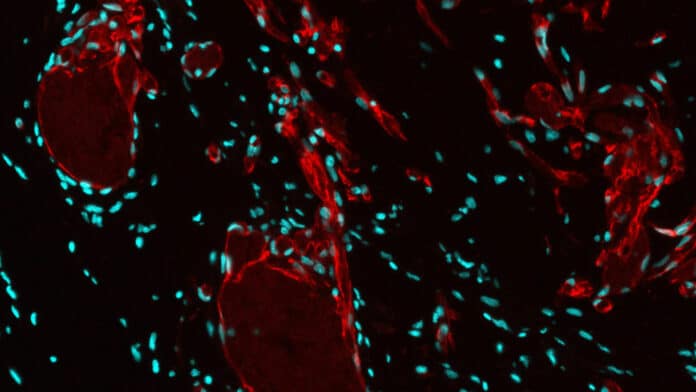Vascular anomalies that impact the venous vasculature and result in benign lesions that do not naturally regress include angiomatosis of soft tissue and sporadic venous malformation. Percutaneous sclerotherapy, where a sclerosant is injected into the afflicted vessels to promote fibrosis and occlusion of the veins, is the first-line treatment for symptomatic venous malformation. This procedure relieves symptoms.
Anomalous vascular development is the cause of vascular malformations. Lesion formation is known to be initiated by somatic or hereditary mutations in the endothelial cells lining the arteries. A recent study from Helsinki University Hospital and the University of Eastern Finland shows that fibroblasts, in addition to endothelial cells, are involved in the genesis of lesions in vascular malformations.
This work sheds new light on the roles that fibroblasts play in controlling blood vessel formation in vascular malformations, roles that were previously unknown. Afatinib, an ErbB inhibitor, was used in drug therapy, which decreased the lesion volume. Treatments for vascular malformations with a fibrous component can be developed using the findings.
Plastic Surgeon Pia Vuola from Helsinki University Hospital said, “More effective therapies are needed for the treatment of venous malformation and angiomatosis of soft tissue due to their high recurrence, possible functional impairment associated with invasive procedures or complications after sclerotherapy.”
Academy Research Fellow Johanna Laakkonen from the University of Eastern Finland said, “Findings from this research improve our understanding of cell-cell communication in blood vessel formation in these vascular anomalies. The discoveries related to fibroblasts show, for the first time, that although vascular malformations have been thought to be solely endothelium-driven diseases, other cell types can affect lesion growth.”
The researchers demonstrated that afatinib drug therapy decreased the volume of venous lesions, suggesting that targeting lesional fibroblasts and endothelial cells may prove advantageous in the future when creating treatments for vascular abnormalities. These discoveries can be used to design new pharmacological therapies.
Journal Reference:
- Jauhiainen S, Ilmonen H, Vuola P, Rasinkangas H, Pulkkinen HH, Keränen S, Kiema M, Liikkanen JJ, Laham Karam N, Laidinen S, Beter M, Aavik E, Lappalainen K, Lohi J, Aronniemi J, Örd T, Kaikkonen MU, Salminen P, Tukiainen E, Ylä-Herttuala S, Laakkonen JP. ErbB signalling is a potential therapeutic target for vascular lesions with the fibrous component. Elife. DOI: 10.7554/eLife.82543
